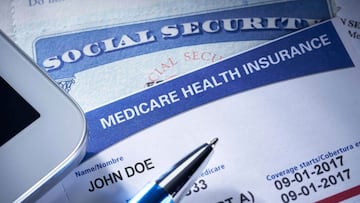Can I sign up for Medicare if I already get Social Security benefits?
Americans are eligible to sign up for Medicare when they turn 65, by which time they are likely already a recipient of Social Security benefits.


If you are receiving benefits, the Social Security Administration will automatically sign you up at age 65 for parts A and B of Medicare. At the beginning of your initial enrollment period (IEP), three months before your 65th birthday, Social Security will send you instructions in the post.
When you turn 65, you will need to register for Medicare coverage if you began receiving Social Security Benefits or Railroad Retirement Benefits four months or less from your 65th birthday. Those who have been receiving federal benefits at least 4 months prior to their 65th birthday will be automatically enrolled in both Medicare Part A and Part B.
Related stories:
Is it mandatory to go on Medicare when you turn 65?
Medicare enrollment at 65 is not mandatory but you will need to opt out of coverage. You must contact the Social Security Administration.
They say a $25/hr minimum wage is radical, I say someone having to work more than one job to provide for themselves is radical.
— Nina Turner (@ninaturner) May 31, 2022
They say Medicare for All is radical, I say millions dying from the lack of healthcare is radical.
Each individual’s IEP covers a seven-month window around their 65th birthday; encompassing the three months before and after their birthday month. This means that someone born in June would have from 1 March to 30 September to take advantage of the IEP. However signing up in your birthday month or after will result in a delay in your coverage starting. Missing this window could result in higher insurance costs.
Which parts of Medicare will I be enrolled in?
There are four parts of Medicare, named A, B, C, and D. Parts A and B are overseen by the Centers for Medicare and Medicaid Services (CMS) while the other two parts are privately organised. This means you will automatically be enrolled in parts A and B with Social Security.
Part A relates to hospital inpatient services, covering the cost of hospital, nursing facility and hospice services. This coverage will typically also include any supplies and pharmaceuticals required while the patient is in hospital. It can even cover physical and occupational therapy required for housebound patients, and counselling for the terminally ill.
Related stories
Part B is for outpatient coverage, meaning it is utilised for services administered outside of the hospital. Home visits from a medical professional, testing services and some equipment costs can be covered, as can the use of an ambulance in emergencies.
However, Part B does not include long-term care, also known as custodial care. This is when patients need support for daily living, like bathing or dressing.

